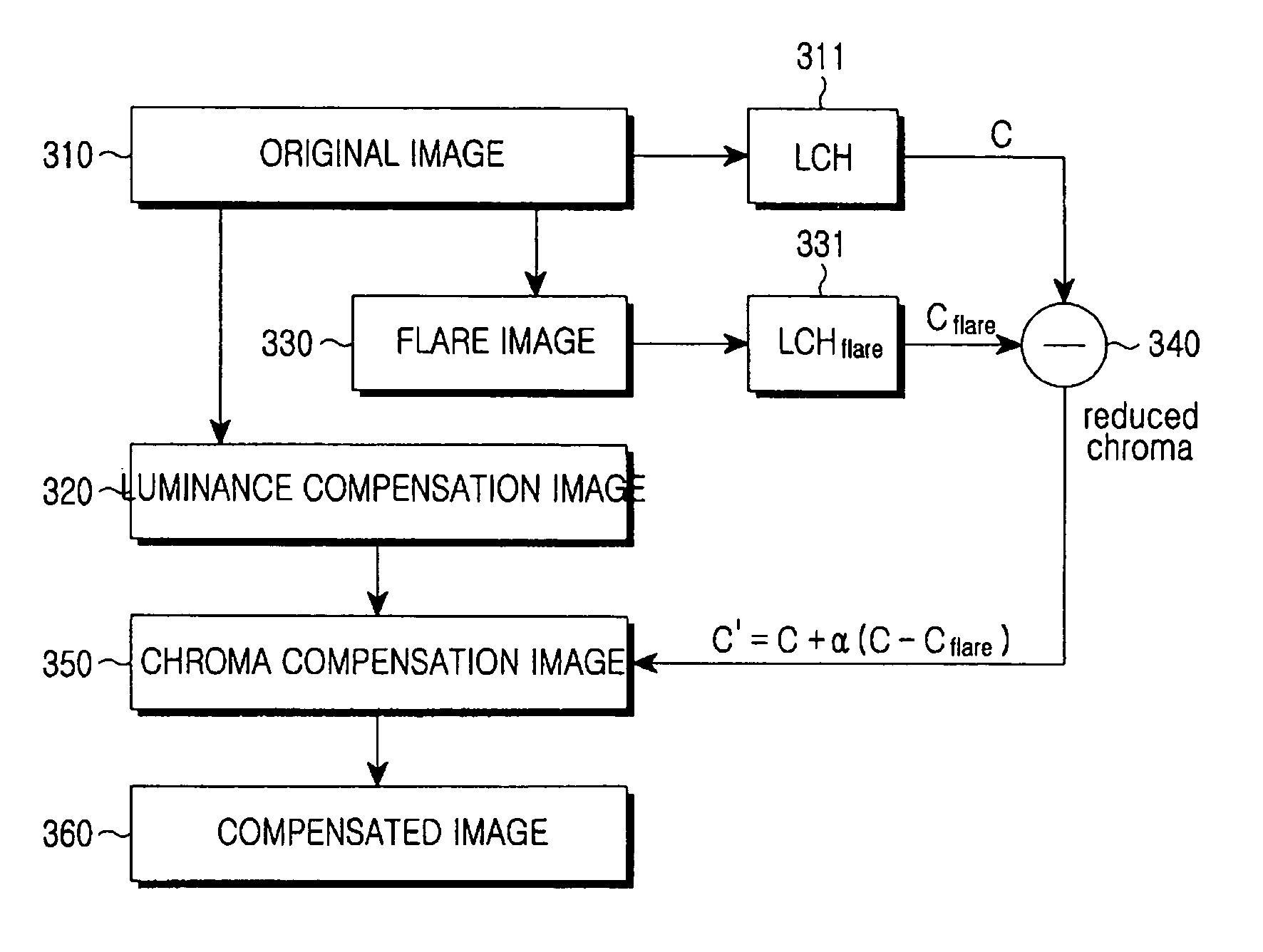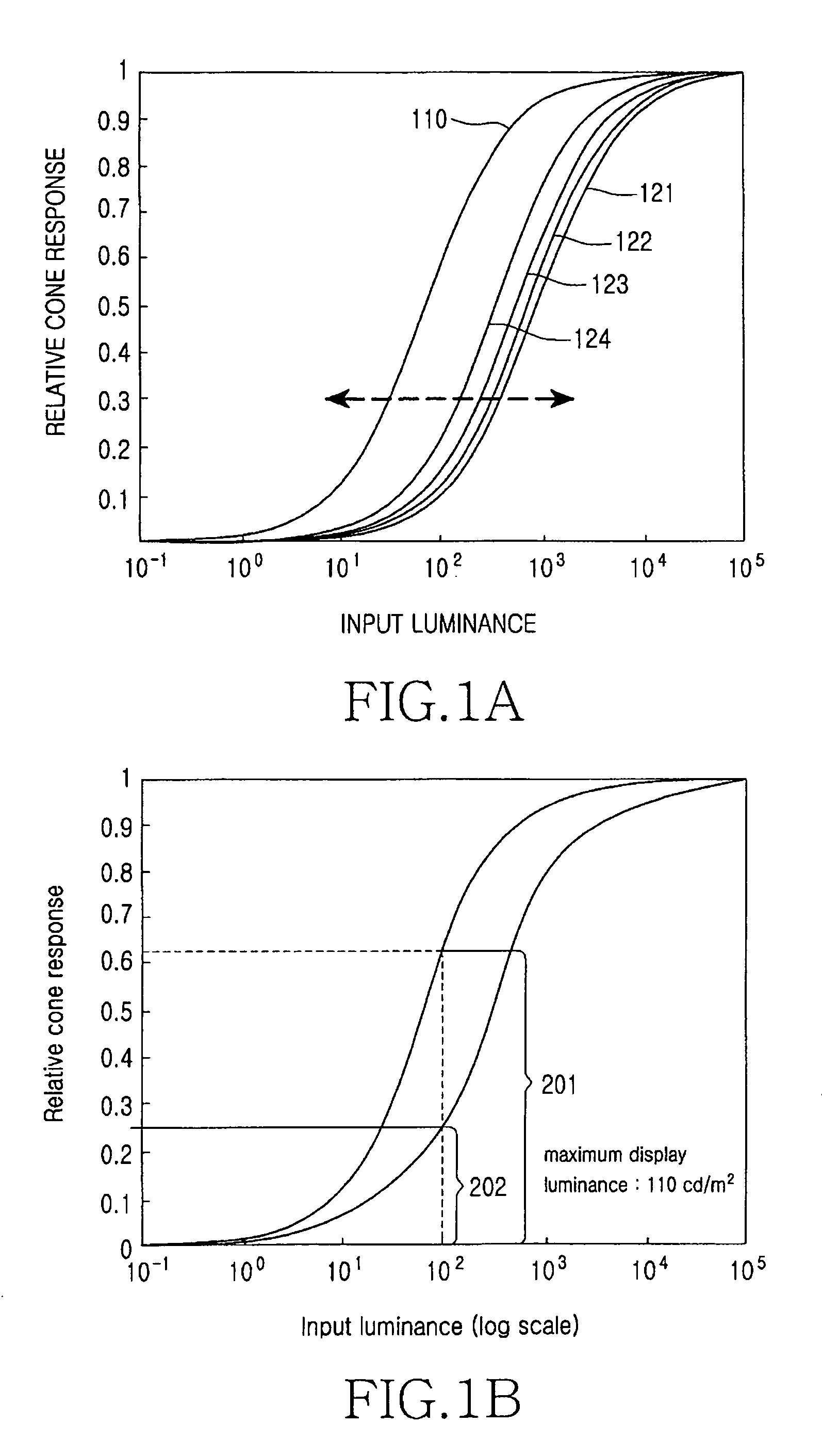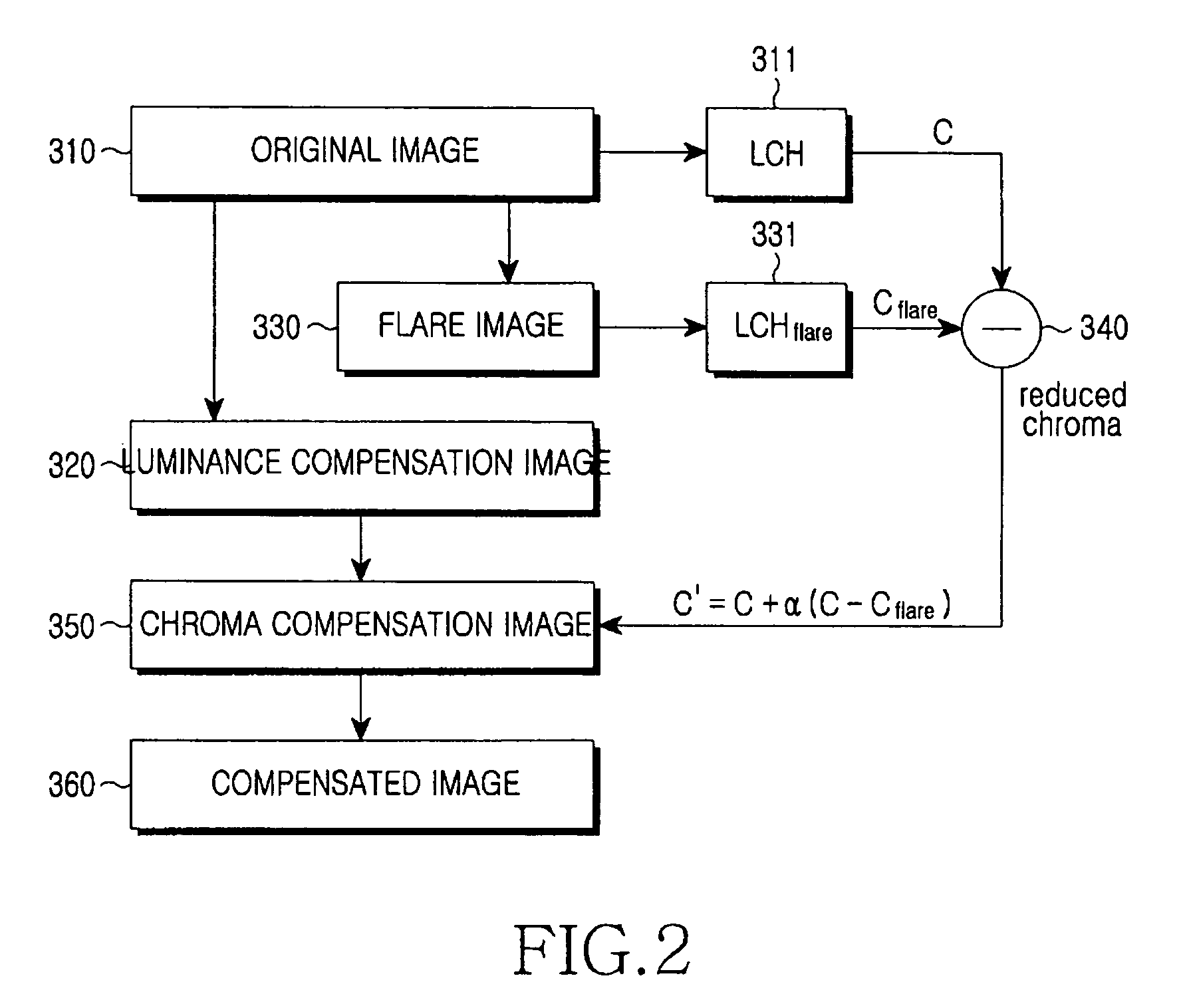Method for compensating an image
a compensation method and image technology, applied in the field of digital devices, can solve problems such as unfavorable acquisition of image information
- Summary
- Abstract
- Description
- Claims
- Application Information
AI Technical Summary
Benefits of technology
Problems solved by technology
Method used
Image
Examples
first embodiment
[0056]FIG. 4 is a block diagram illustrating steps of the second to fourth processes in accordance with the present invention. Next, the step of compensating chroma of an image will be described. Tristimulus values X, Y, and Z of the image can be computed from an intensity of the background illumination (410 and Table 1). X and Z of the computed tristimulus values can be transformed to a*b* according to the CIELAB color space (420). Y indicates luminance of the image (440) and varied luminance Y′ is computed (450). Y′ can be transformed to L* according to the CIELAB color space.
[0057]After L*a*b* based on the CIELAB color space is combined, a combination result is reflected to image compensation.
[0058]FIG. 7 is a graph illustrating chroma variation according to a flare phenomenon and a chroma enhancement method. The x-axis of the graph represents chroma, and the y-axis of the graph represents luminance. Polygonal graphs represent a color boundary, respectively. The color boundary of...
second embodiment
[0062]FIG. 8 is a block diagram illustrating an algorithm in accordance with the present invention. Referring to FIG. 10, the luminance and chroma improvements in accordance with this embodiment are achieved through two steps. The algorithm transforms data input in a system of three primary colors (RGB) to tristimulus values (Step 510). The tristimulus values X, Y, and Z set a sensitivity curve (associated with Equation (2) and ƒ(Y) of FIGS. 6A and 6B) (Step 521), and the tristimulus values are transformed to a*b* (Step 511).
[0063]The sensitivity curve (associated with ƒ(Y) and FIGS. 5A to 6B) is transformed by a mirror-image inverse function ƒ′(Y) (Step 522). Y′ of the tristimulus values of the inverse function is transformed to L* (Step 523).
[0064]After steps 523 and 511, a*b* and L* are transformed to LCH (Step 530). According to transformation of C, LCH is transformed to LC′H according to Equations (4) and (5) (Step 540). LC′H is transformed to RGB, such that RGB is output.
[0065...
PUM
 Login to View More
Login to View More Abstract
Description
Claims
Application Information
 Login to View More
Login to View More - R&D
- Intellectual Property
- Life Sciences
- Materials
- Tech Scout
- Unparalleled Data Quality
- Higher Quality Content
- 60% Fewer Hallucinations
Browse by: Latest US Patents, China's latest patents, Technical Efficacy Thesaurus, Application Domain, Technology Topic, Popular Technical Reports.
© 2025 PatSnap. All rights reserved.Legal|Privacy policy|Modern Slavery Act Transparency Statement|Sitemap|About US| Contact US: help@patsnap.com



